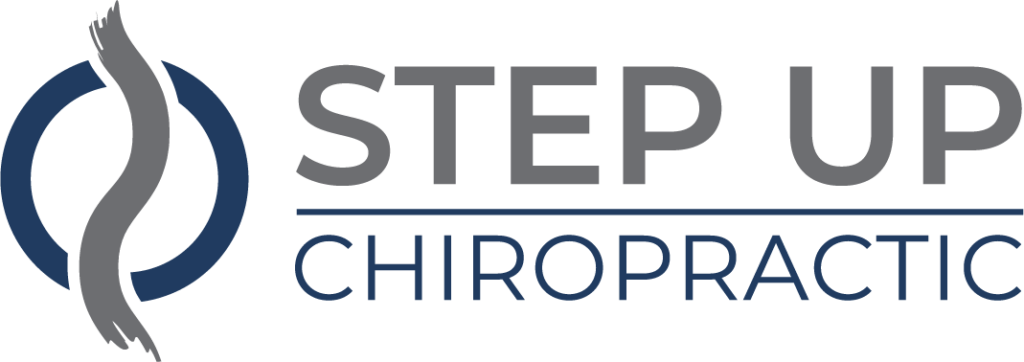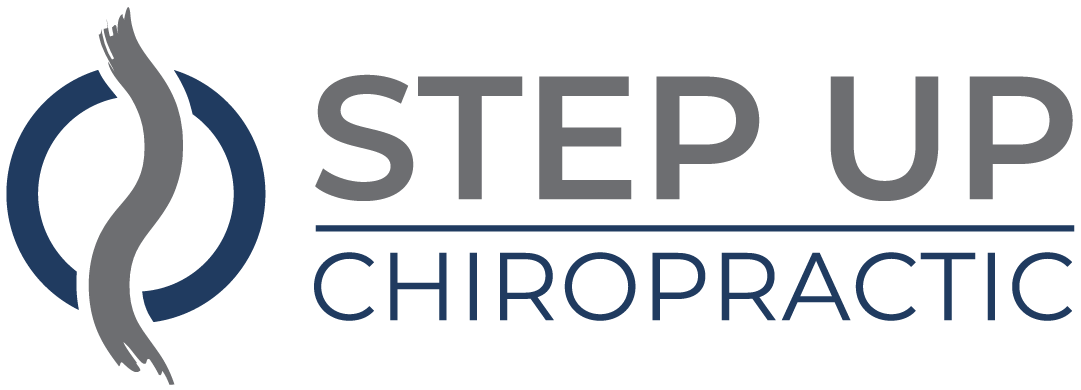If you want to enhance your flexibility, it's crucial to start with a clear understanding of your body's limits and set achievable goals. You might be surprised at how incorporating both dynamic and static stretching can make a difference in your routine. By focusing on specific areas that need attention and implementing a few strategic techniques, you could see significant improvements. But there's more to it than just stretching; the secrets behind achieving flexibility go deeper. Ready to uncover what you might be missing?
Understand Your Body's Limits
How well do you really know your body's limits? Understanding these limits is essential for anyone looking to improve flexibility. It's not just about pushing yourself; it's about recognizing when to hold back. Your body has unique capabilities, and knowing them can prevent injuries while enhancing your stretching routine.
Start by paying attention to how your body feels during various movements. Are there specific areas that feel tight or uncomfortable? This discomfort often signals that you're approaching your limit, and it's important to listen to those cues. Instead of forcing a stretch, ease into it. Gradually increase your range of motion over time, allowing your muscles to adapt.
Keep in mind that flexibility varies from person to person. Factors like age, genetics, and activity level play a significant role in determining how flexible you can become. It's crucial to set realistic goals rather than comparing yourself to others. Focus on your progress, no matter how small.
Also, consider your daily habits. If you spend most of your day sitting, you might find that your hip flexors and hamstrings are particularly tight. Identifying these areas can guide your stretching routine and help you target specific muscles effectively.
Incorporate Dynamic Stretching
To boost your flexibility, incorporating dynamic stretching into your routine is essential.
These exercises not only warm up your muscles but also enhance your performance and reduce injury risk.
Let's explore the benefits, the best exercises to include, and when you should be doing them.
Benefits of Dynamic Stretching
Dynamic stretching offers a range of benefits that can greatly enhance your flexibility and overall performance. By incorporating dynamic stretches into your routine, you prepare your muscles and joints for activity, reducing the risk of injury. This type of stretching increases blood flow and raises your body temperature, which primes your muscles for more intense movements.
Moreover, dynamic stretching improves your range of motion. As you perform these stretches, you're actively engaging the muscles, which helps them adapt and become more flexible over time. This adaptability not only boosts your athletic performance but also enhances your daily movements, making tasks easier and more efficient.
Another key benefit is that dynamic stretching can sharpen your focus and mental readiness. Engaging in this active form of stretching can help you mentally prepare for your workout or sport, ensuring you're in the right mindset. It's a great way to shake off the stress and get excited about your physical activity.
Ultimately, incorporating dynamic stretching into your routine can lead to better performance, increased flexibility, and a decreased chance of injury. So, make it a regular part of your warm-up and enjoy the benefits it brings!
Best Dynamic Stretching Exercises
Incorporating effective dynamic stretching exercises into your routine can greatly boost your flexibility and performance.
Start with leg swings, where you stand on one leg and swing the opposite leg forward and backward. This warms up your hip flexors and hamstrings while increasing your range of motion.
Next, try walking lunges. Step forward into a lunge position, keeping your front knee over your ankle. This not only stretches your hip flexors but also engages your quads and glutes. You can add a twist by rotating your torso towards the front leg to further enhance the stretch.
Another great option is arm circles. Stand tall and extend your arms out to the sides. Make small circles, gradually increasing their size. This exercise warms up your shoulders and improves mobility in your upper body.
Lastly, incorporate high knees into your routine. Jog in place, bringing your knees up towards your chest. This dynamic movement not only stretches your hip flexors but also elevates your heart rate, preparing your body for more intense activities.
Timing for Dynamic Stretching
Timing is essential when it comes to incorporating dynamic stretching into your workout routine. You want to guarantee that you're performing these stretches at the right moments to maximize their benefits.
Dynamic stretching is best used as a warm-up before your main workout. It prepares your muscles, increases blood flow, and enhances your range of motion, making it easier to perform your exercises effectively.
Here are three key times to incorporate dynamic stretching:
- Before Workouts: Use dynamic stretching to activate and warm up your muscles. This sets the stage for improved performance and reduces the risk of injury.
- During Active Breaks: If you're taking breaks between sets or exercises, do some dynamic stretches to keep your muscles engaged and maintain flexibility.
- In Sports Practices: Incorporate dynamic stretches at the beginning of your practice sessions. This can enhance your agility and overall performance during the game.
Practice Static Stretching
One of the simplest yet most effective ways to enhance your flexibility is through static stretching. This method involves holding a stretch for a set period, usually between 15 to 60 seconds, which allows your muscles to lengthen and relax. You can incorporate static stretching into your routine after a workout or as a standalone practice.
When you're ready to start, identify the muscle groups you want to target. Common stretches include hamstring stretches, quadriceps stretches, and shoulder stretches. For example, to stretch your hamstrings, sit on the floor with your legs extended in front of you. Reach forward toward your toes, keeping your back straight, and hold that position. You'll feel the stretch in the back of your legs, and that's where you want to focus your effort.
It's essential to breathe deeply and steadily while stretching. Inhale as you prepare to stretch, and exhale as you deepen into the stretch. This not only helps you relax but also enhances your range of motion. Be mindful of your body's signals; if you feel pain, ease off the stretch.
To see progress, aim to practice static stretching at least three to four times a week. Consistency is key to improving flexibility over time.
As you become more comfortable with these stretches, try to hold them for longer durations or explore new stretches to challenge your body further. Embrace this practice, and you'll notice significant improvements in your flexibility and overall well-being.
Use Foam Rollers
Static stretching lays a solid foundation for flexibility, but adding foam rollers can enhance your routine even further. Foam rolling can help release muscle tightness, improve blood circulation, and increase your range of motion.
It's a simple yet effective way to prepare your muscles for deeper stretching and ultimately boost your flexibility.
Here's how to incorporate foam rolling into your flexibility routine:
- Target Major Muscle Groups: Focus on areas like your calves, quadriceps, hamstrings, and back. Spend about 1-2 minutes on each area, rolling slowly to find tight spots. When you identify a tender spot, pause and breathe deeply for a few seconds to release tension.
- Use Proper Technique: Verify you're rolling with controlled movements. Avoid rolling over bony areas or joints. Instead, focus on the muscle belly, applying just enough pressure to feel the tension without causing pain. This helps prevent injury and maximizes the benefits of foam rolling.
- Incorporate It Consistently: Aim to foam roll at least 2-3 times a week, ideally before and after your workouts. This consistency will help maintain muscle elasticity and prepare your body for further stretching exercises.
Engage in Yoga
Engaging in yoga can greatly boost your flexibility and overall well-being.
Regular practice offers numerous benefits, from improved posture to reduced stress.
Plus, focusing on essential poses can help you access greater range of motion and enhance your physical performance.
Benefits of Regular Practice
Practicing yoga regularly offers a multitude of benefits that extend beyond physical flexibility.
You'll discover that incorporating yoga into your routine can greatly enhance your overall well-being. Not only does it improve your body's elasticity, but it also fosters mental clarity and emotional stability.
Here are three key benefits you can expect from a consistent yoga practice:
- Stress Reduction: Engaging in yoga helps lower cortisol levels, which can decrease stress and anxiety. The focus on breath and mindfulness allows you to find calm amid life's chaos.
- Improved Posture: Regular yoga helps strengthen your core and align your spine, leading to better posture. This improvement can alleviate discomfort and prevent injuries, especially if you spend long hours sitting.
- Enhanced Mind-Body Connection: Yoga encourages self-awareness and mindfulness, allowing you to tune into your body's signals. This connection can lead to healthier lifestyle choices and a more balanced emotional state.
Essential Poses for Flexibility
Incorporating essential yoga poses into your routine can greatly enhance your flexibility over time. Start with the Downward-Facing Dog. This pose stretches your hamstrings, calves, and spine, helping to lengthen your entire body.
Next, try the Cobra pose. It opens up your chest, stretches your shoulders, and improves spinal flexibility. Hold each pose for five breaths, allowing your body to relax and deepen into the stretch.
Another excellent pose is the Pigeon pose, which targets your hips and glutes. You'll find it incredibly effective for releasing tension in these areas.
Follow this with the Seated Forward Bend, where you'll stretch your hamstrings and lower back. Remember to keep your spine long and hinge from your hips.
Finally, incorporate the Butterfly pose to open your hips further. Sit with your feet together and gently press your knees down towards the floor.
Hold each pose for longer as you progress, and always listen to your body. Consistency is key, so practice these poses regularly to see significant improvements in your flexibility.
Embrace the journey, and enjoy the benefits of increased mobility!
Maintain Consistent Hydration
Staying hydrated is essential for maintaining flexibility, as even mild dehydration can lead to muscle stiffness and reduced range of motion. When your body lacks sufficient water, your muscles and joints may feel tight, making it harder to perform stretches and movements effectively.
By ensuring you drink enough fluids throughout the day, you'll help your body function efficiently and support your flexibility goals.
To help you maintain consistent hydration, consider these simple strategies:
- Carry a water bottle: Keep a reusable water bottle with you at all times. This serves as a constant reminder to drink water regularly. Aim to refill it several times a day.
- Set hydration goals: Establish daily water intake goals based on your activity level and climate. A general guideline is to aim for at least eight 8-ounce glasses of water daily, but you may need more if you're active or sweating heavily.
- Infuse your water: If plain water isn't appealing, try infusing it with fruits, herbs, or vegetables. Adding slices of lemon, cucumber, or mint can make drinking water more enjoyable and encourage you to stay hydrated.
Warm Up Properly
Proper hydration sets the stage for a successful warm-up routine. When you're well-hydrated, your muscles function more efficiently, allowing you to loosen up effectively.
Start your warm-up with dynamic movements that gradually increase your heart rate and prepare your muscles for stretching. Think arm circles, leg swings, and torso twists—these exercises help increase blood flow and improve mobility.
Aim to spend about 5 to 10 minutes on this initial phase. Don't rush; allow your body to adapt to movement. As you progress, incorporate sport-specific activities if you have a particular exercise in mind. For instance, if you're preparing for a run, include high knees or butt kicks to activate the muscles you'll use.
Next, focus on joint mobility. Spend a minute or two on gentle rotations for your ankles, knees, hips, shoulders, and neck. This practice helps prevent injuries and enhances your overall flexibility.
Once you've warmed up your body, it's time to move into your stretching routine. Start with dynamic stretches that mimic the movements you'll perform later, ensuring your muscles are prepared for the tasks ahead. Remember, the goal is to improve flexibility without pushing your limits too soon.
Focus on Breathing Techniques
To enhance your flexibility, focusing on your breathing techniques is key.
Diaphragmatic breathing can improve your breath control during stretches, helping you relax and deepen your movements.
Diaphragmatic Breathing Benefits
Harnessing the power of diaphragmatic breathing can greatly enhance your overall well-being. This technique not only promotes relaxation but also improves your physical performance. By engaging your diaphragm, you can optimize oxygen intake and support your body's natural functions.
Here are three key benefits of diaphragmatic breathing:
- Stress Reduction: Practicing this breathing technique activates your parasympathetic nervous system, which helps lower stress levels and promotes a sense of calm. You'll find it easier to manage daily stressors and maintain a peaceful mindset.
- Enhanced Oxygenation: Diaphragmatic breathing allows for deeper lung expansion, improving oxygen flow throughout your body. This increased oxygen supply can boost your energy levels and enhance your overall physical performance during activities.
- Improved Posture: Engaging your diaphragm encourages proper alignment of your spine and core. By integrating this breathing technique into your routine, you can foster better posture and reduce discomfort related to poor alignment.
Breath Control During Stretching
Breath control plays an essential role in enhancing your stretching routine. By focusing on your breath, you can deepen your stretches and improve your overall flexibility. When you inhale, fill your lungs completely, allowing your abdomen to expand. This diaphragmatic breathing not only calms your mind but also prepares your body for the stretch ahead.
As you exhale, gently release any tension. Use your breath to guide your movements; when you inhale, prepare to stretch, and as you exhale, ease deeper into the pose. This rhythm creates a sense of flow, making it easier to push past your limits safely.
It's vital to maintain a steady breath throughout your session. If you find yourself holding your breath, you're likely pushing too hard. Instead, take a moment to reset and focus on your breathing. This way, you can maintain control and avoid strain or injury.
Incorporate breath counts into your routine—inhale for a count of four, hold for two, and exhale for a count of six. This technique not only enhances your flexibility but also promotes relaxation, making stretching a more enjoyable experience.
Mindfulness and Breath Awareness
While practicing mindfulness during your stretching routine, you'll find that focusing on your breath can greatly enhance your awareness and connection to your body.
Breath awareness not only calms your mind but also helps you push deeper into your stretches. Here are three effective breathing techniques to incorporate:
- Diaphragmatic Breathing: Lie on your back or sit comfortably. Place one hand on your chest and the other on your belly. Inhale deeply through your nose, allowing your abdomen to rise while keeping your chest still. Exhale slowly through your mouth. This technique encourages full oxygen exchange and promotes relaxation.
- 4-7-8 Breathing: Inhale quietly through your nose for a count of four. Hold your breath for a count of seven. Exhale completely through your mouth for a count of eight. This technique helps reduce stress and increases focus, making your stretching session more effective.
- Equal Breathing: Inhale to a count of four, then exhale to the same count. This balances your energy and keeps your mind centered.
Integrating these breathing techniques into your routine can transform your stretching experience and enhance your overall flexibility.
Set Realistic Goals
Setting realistic goals is essential for enhancing your flexibility. It's important to understand where you currently stand and what you want to achieve. Before diving into a new stretching routine, assess your current flexibility level. Are you able to touch your toes? Can you perform a split? Knowing your starting point helps you set achievable milestones.
When you set your goals, make them specific and measurable. Instead of saying, "I want to be more flexible," try stating, "I want to touch my toes within four weeks." Breaking your overall goal into smaller, manageable steps makes progress easier to track and less overwhelming.
Don't forget to factor in time. Flexibility doesn't improve overnight; it takes consistent effort. Set a timeline for each goal, ensuring it's realistic based on your lifestyle. If you're busy, aim for shorter, more frequent stretching sessions rather than long ones that might be hard to fit in.
Also, remember to keep your goals challenging but attainable. If you've never stretched before, don't expect to achieve advanced poses like a full split in a week. Instead, focus on gradual improvements, such as increasing your reach or holding stretches for longer periods.
Finally, celebrate your achievements, no matter how small. Recognizing progress keeps you motivated and committed to your flexibility journey. By setting realistic goals, you'll stay focused, encouraged, and on the right path to becoming more flexible.
Allow Time for Recovery
How often do you remember to give your body a break after intense stretching sessions? Recovery is just as important as the stretching itself. If you push your body too hard without allowing it to recover, you might risk injury and inhibit your progress.
Here's why you should prioritize recovery in your flexibility routine.
- Muscle Repair: After stretching, your muscles need time to rebuild and strengthen. This process helps you gain flexibility over time, so don't skip it. Schedule rest days to guarantee your muscles can recover fully.
- Preventing Injury: When you stretch too frequently without breaks, you're more likely to strain or injure your muscles. Listen to your body; if you feel soreness or discomfort, it's a sign that you need to rest. Ignoring these signals can lead to long-term setbacks.
- Mental Recharge: Flexibility training isn't just physical; it's mental too. Taking time off allows you to regroup and refocus. You'll come back to your routine refreshed and more motivated, which often leads to better results.
To truly improve your flexibility, incorporate recovery into your routine. This means not only resting but also engaging in light activities like walking or yoga on your off days.
Conclusion
By understanding your body's limits and incorporating a mix of dynamic and static stretching, you can greatly improve your flexibility. Remember to warm up properly, use breathing techniques, and allow time for recovery. Set realistic goals and track your progress to stay motivated. Engaging in activities like yoga and using foam rollers can further enhance your flexibility journey. Start today, and celebrate every small achievement along the way to keep yourself inspired and committed!




